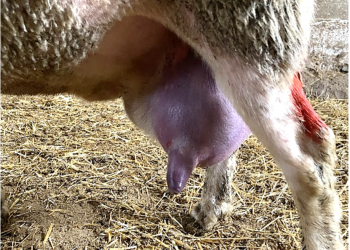Staphylococcus spp., the cause of the problem
Antoni Prenafeta, Senior R&D Manager for Biologicals at HIPRA, explains why these pathogens are the most common in mastitis in sheep and goats and why they are so difficult to control:
● They form part of the skin flora in mammals.
● They produce multiple virulence factors.
● Many strains produce biofilm.
“Biofilm provides resistance to antibodies and increases infection chronicity”.
Controlling mastitis: types of vaccines
Most of the vaccines available on the market are based on bacterins. In 2014, probably the first-ever vaccine to contain a biofilm-producing strain was registered.
Studies have shown that protection against biofilm is the best way to fight against staphylococcal mastitis in sheep and goats.
This vaccine induces antibodies against the PNAG polysaccharide, the main component of the extracellular matrix of the biofilm produced by Staphylococcus Spp.
Biofilm-producing strain: how does it improve the vaccine’s efficacy?
Antoni Prenafeta tells us about the effects and advantages of including this strain in the vaccine:
● Cross-protection against Staphylococcus aureus and CNS.
● Prevention of subclinical mastitis.
● Reduction of bacterial excretion: protection of healthy animals.
“Animals with chronic and subclinical mastitis: the main reservoir of infection in the flock”.
Conclusions
● Due to the characteristics of Spahylococcus spp, there is always infection pressure in the flock.
● Protection against biofilm is the most effective way of reducing cases of clinical staphylococcal mastitis and also of preventing chronic and subclinical mastitis.
● This vaccine also reduces shedding.


